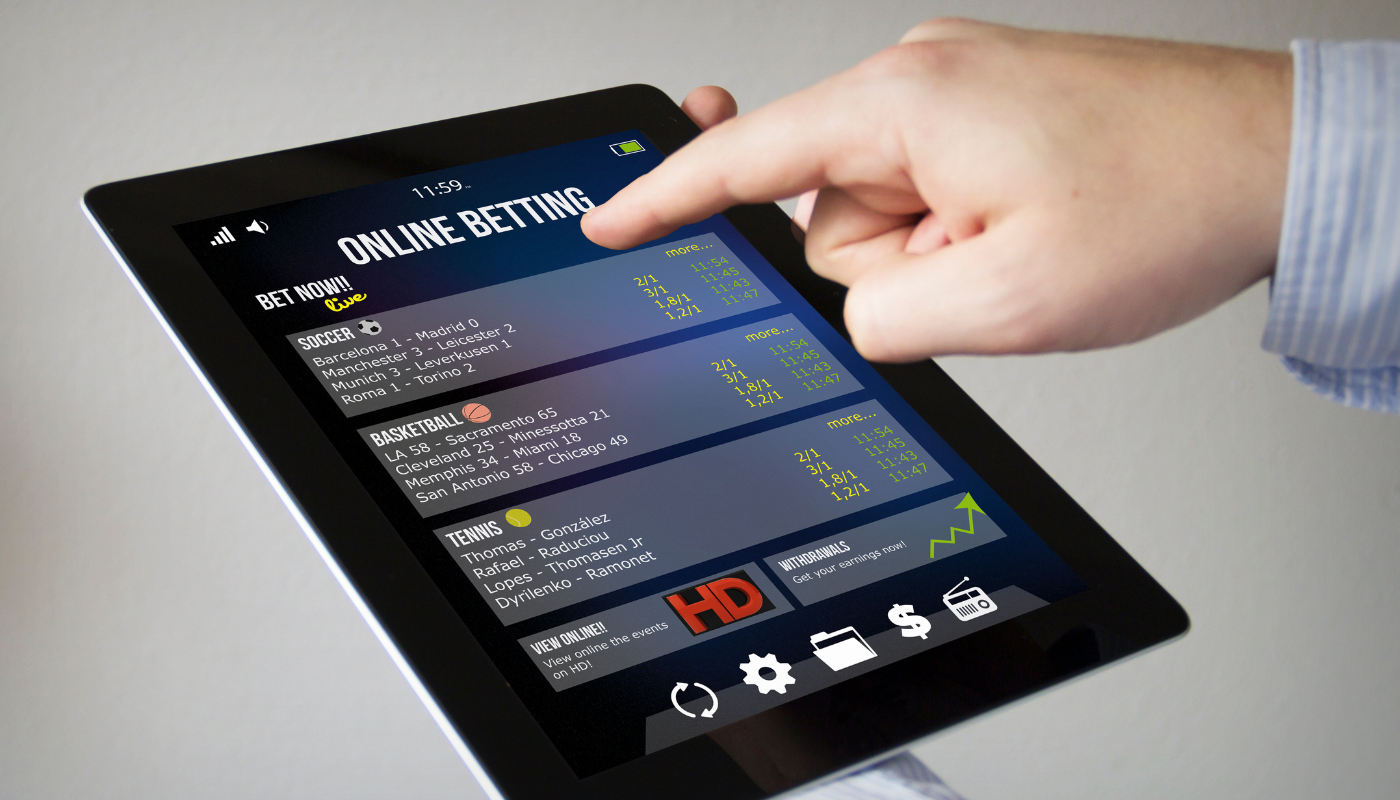In the dynamic world of modern football, technology has become an indispensable ally, transforming the game in ways previously unimaginable. From the Video Assistant Referee (VAR) system to cutting-edge analytics, technological advancements are reshaping how games are played, watched, and analyzed. This exploration delves into the profound influence of technology on football, promising insights into its current applications and a glimpse into what the future might hold. Join us as we unravel the digital revolution sweeping across the beautiful game.
The Evolution of VAR Technology
The advent of Video Assistant Referee (VAR) technology has marked a significant milestone in the realm of football, transforming not just the way games are officiated but also how football scores and football itself is experienced by fans and players alike. Initially introduced to address contentious decisions and reduce human error, VAR has undergone considerable evolution since its inception. This journey reflects the broader technological advancements within the sport.
At its core, VAR was designed to provide a fail-safe for referees, offering a second look at incidents that could potentially alter the course of a game. Its application ranges from checking goals, penalty decisions, direct red card incidents, to mistaken identity in awarding cards. Over time, the technology behind VAR has been refined, with improvements in camera technology and decision-making algorithms enhancing its accuracy and speed. These enhancements have made football scores and decisions more reliable, ensuring that the outcome of games is fairer and more just.
Despite its benefits, the integration of VAR into football has not been without controversy. Debates around the disruption it causes to the flow of the game, the consistency of its use, and the transparency of decision-making processes have sparked discussions among stakeholders. However, as the technology continues to evolve, so too does the approach to these challenges, promising a future where VAR seamlessly complements the beautiful game.
| Year | Major Improvement | Impact on Football |
|---|---|---|
| 2016 | Introduction of VAR in professional leagues | Reduced major officiating errors |
| 2018 | World Cup debut | Enhanced fairness in game outcomes |
| 2019 | Implementation of clearer offside technology | Improved accuracy in offside decisions |
| 2020 | Refinement of handball rules with VAR | Greater consistency in handball decisions |
| 2022 | Introduction of semi-automated offside technology | Quicker and more accurate offside rulings |
Impact on Decision-Making Accuracy
The infusion of technology into modern football, particularly through the implementation of the Video Assistant Referee (VAR) system, has significantly revolutionized the game by enhancing the accuracy of decision-making. This technological advancement ensures that critical decisions, which can ultimately affect football results and football fixtures, are made with a higher degree of precision. The primary goal of integrating technologies like VAR is to minimize human errors that can impact the outcomes of matches and, by extension, championships.
Before the advent of VAR and similar technologies, referees’ decisions were final, often leading to controversial outcomes that could not be revisited or corrected. This scenario sometimes resulted in injustices that affected the standings in football fixtures and, ultimately, the league results. However, with VAR, referees now have the ability to review decisions on goals, penalty calls, direct red card incidents, and mistaken identity when awarding cards. This review process is crucial as it provides a second chance to make the right call, ensuring that the fairness of the game is upheld.
Moreover, the implementation of goal-line technology complements VAR by instantly determining whether the ball has crossed the goal line, providing clear evidence for awarding goals. This synergy between different technological tools has further enhanced the accuracy of decisions, contributing to the credibility and integrity of football results. Despite some criticism regarding the pace of the game due to VAR reviews, the consensus within the football community is that the benefits, particularly in terms of decision-making accuracy, far outweigh the drawbacks.
Additionally, the data collected through these technologies offer invaluable insights that can be analyzed to improve the quality of officiating and the game itself. This data-driven approach to understanding game dynamics is pivotal in training referees and in developing strategies that align with the evolving nature of football. Hence, technology not only impacts decision-making during matches but also plays a significant role in the broader strategy and development of the sport.
| Technology | Impact on Decision Making | Benefit to Football |
|---|---|---|
| VAR | Reduces refereeing errors | Improves fairness in game outcomes |
| Goal-line Technology | Instant goal verification | Eliminates disputes on goal decisions |
| Data Analytics | Enhances understanding of game dynamics | Improves team strategies and player performance |
| Communication Devices | Improves referee coordination | Ensures consistency in decision-making |
Ultimately, the role of technology in modern football transcends beyond merely assisting referees in making accurate decisions. It is about safeguarding the integrity of the sport, ensuring that football results and football fixtures are reflective of fair play and true competition. As technology continues to evolve, its integration into football will undoubtedly deepen, further revolutionizing the game in ways we can only begin to imagine.
Technological Innovations Beyond VAR
The introduction of the Video Assistant Referee (VAR) system marked a revolutionary change in football, enhancing the fairness and accuracy of critical decisions. However, the evolution of technology in football extends far beyond VAR. Innovations such as goal-line technology, data analytics, and wearable tech are significantly transforming how the game is played, analyzed, and experienced.
Goal-line technology was one of the first major technological advances to be integrated into football, offering clear, immediate decisions on whether the ball has crossed the goal line. This technology has effectively eliminated a major source of controversy in matches, ensuring that teams are awarded goals rightfully earned. Meanwhile, data analytics has opened up new vistas for team strategy. By analyzing vast amounts of data, teams can gain insights into player performance, opponent tactics, and potential improvements. This analysis can inform everything from in-game tactics to player recruitment strategies, making it an invaluable tool for modern football teams.
Wearable tech, on the other hand, is revolutionizing player training and health management. Devices that monitor heart rate, distance covered, and even predict injury risks are now commonplace. This technology allows for personalized training regimes and more effective injury prevention strategies, ensuring players can perform at their best. Together, these innovations are shaping the future of football, making the game more precise, strategic, and engaging.
| Technology | Application | Impact |
|---|---|---|
| Goal-line Tech | Decision Making | Accuracy in Scoring |
| Data Analytics | Strategy | Enhanced Team Performance |
| Wearable Tech | Health & Training | Improved Player Fitness |
| VAR | Refereeing | Fairer Gameplay |
| AI & Machine Learning | Game Analysis | Strategic Insights |
In the rapidly evolving landscape of football, staying abreast of the latest technological innovations is crucial for teams seeking a competitive edge. These advancements not only enhance the accuracy and fairness of the game but also offer profound insights into performance optimization and player welfare. As we continue to explore the possibilities, the future of football looks set to be more dynamic and data-driven than ever before. For fans and professionals alike, keeping up with the latest football news and technological trends is essential for a deeper understanding of the game’s ongoing evolution.
Players and Coaches’ Perspectives on Technology in Football
The integration of technology in football, particularly through the Video Assistant Referee (VAR) system, has elicited diverse reactions from players and coaches alike. Many see it as a revolutionary step towards fairness and accuracy in the game. Coaches have adapted their strategies, knowing that critical decisions can be reviewed, which in turn affects their instructions and player substitutions during matches. Players, on the other hand, have experienced a shift in their on-field behavior, becoming more mindful of the fact that their actions are under closer scrutiny than ever before.
However, this integration has not been without its challenges. Some coaches argue that the pace of the game is affected, with disruptions for VAR reviews sometimes halting the momentum of a team. Players have expressed mixed feelings; while some appreciate the reduction in errors, others feel that the essence of football is being compromised, with spontaneous moments of joy being replaced by anxious waits for VAR decisions. Despite these concerns, the consensus is that technology’s role in modern football is here to stay, and adapting to it is not just optional, but necessary for success.
Adapting to New Normals: VAR in Training and Tactics
Understanding the implications of technology in football extends beyond the pitch. Training sessions now often include scenarios that might involve VAR checks, preparing players for the mental adjustment needed during actual games. Furthermore, coaches are increasingly using technology not just for compliance with VAR but also for analyzing performance, scouting opponents, and improving player fitness and health management. This comprehensive adoption underscores the profound impact technology has on modern football, reshaping its future one game at a time.
- Integration of VAR in tactical training
- Impact on player behavior and discipline
- Strategic adjustments by coaches during matches
- Use of technology for player performance analysis
- Enhanced health and fitness management through tech tools
Future Directions in Football Tech
The landscape of football is experiencing a transformation that transcends the traditional boundaries of the sport, thanks to the innovative infusion of technology. As we delve deeper into the 21st century, the role of technology in modern football continues to evolve, offering new dimensions to the game that were once thought impossible. The introduction of the Video Assistant Referee (VAR) system marked the beginning of this new era, but it is merely the tip of the iceberg. The future directions in football technology promise to revolutionize the game even further, enhancing the accuracy of decisions, improving player performance, and enriching the fan experience.
One of the most anticipated advancements is the integration of augmented reality (AR) and virtual reality (VR) into the spectator experience. Imagine donning a VR headset to immerse yourself in a live match from the comfort of your home, experiencing the game from any angle, and feeling as though you’re right there in the stadium. Meanwhile, AR could provide real-time stats and data overlay during matches, offering a richer understanding of the game. This seamless blend of digital and physical worlds could significantly change how fans interact with the sport.
On the field, wearable technology is set to play a pivotal role in monitoring and enhancing player performance. Smart clothing equipped with biometric sensors could provide real-time data on players’ physical condition, fatigue levels, and risk of injury. This information could be invaluable for coaches in strategy planning and player fitness management. Furthermore, advancements in AI and machine learning could analyze this data to predict outcomes, personalize training programs, and prevent injuries, contributing to a healthier, more competitive sport.
Another promising development is the application of blockchain technology in football management and fan engagement. Blockchain could offer a more transparent and secure way of managing contracts and transfers, reducing the risk of fraud and corruption. For fans, blockchain technology could enable secure voting on club decisions, authenticate merchandise, and even facilitate ticket exchanges, making the sport more accessible and fan-friendly.
As we look to the future, the potential for technology to enhance football is limitless. The key will be to balance innovation with the essence of the sport, ensuring that technology serves to improve the game without undermining its integrity or spirit. The journey ahead is undoubtedly exciting, and it will be fascinating to see how these technological advancements unfold in the world of football.
| Technology | Application | Impact |
|---|---|---|
| VAR | Refereeing decisions | Increased accuracy |
| Wearable Tech | Player performance monitoring | Improved health and strategy |
| AR/VR | Fan experience | Enhanced immersion |
| AI & Machine Learning | Data analysis | Personalized training, injury prevention |
| Blockchain | Management & Fan engagement | Transparency and security |
The integration and advancement of technology in football signify a new dawn for the sport. With each innovation, from VAR to potential future developments like AR, VR, wearable tech, and blockchain, the game is set to become more accurate, engaging, and fair. This evolution, however, must be managed carefully to preserve the essence and spirit of football, ensuring that technology enhances rather than detracts from the beautiful game. As we move forward, the collaboration between tech experts, governing bodies, and the football community will be crucial in steering this new era towards success. The future of football technology is not just about changing how the game is played or watched but about enriching the global language of football for everyone involved.
In conclusion, the journey of integrating technology into football is an ongoing saga of innovation and improvement. As we stand on the brink of what could be a revolution in the sport, it is clear that the future holds exciting possibilities. The role of technology in football is not just to revolutionize the game but to unite fans, players, and coaches in a shared, enhanced experience. The road ahead is promising, and it beckons us to envision a game that is more inclusive, fair, and thrilling than ever before.








